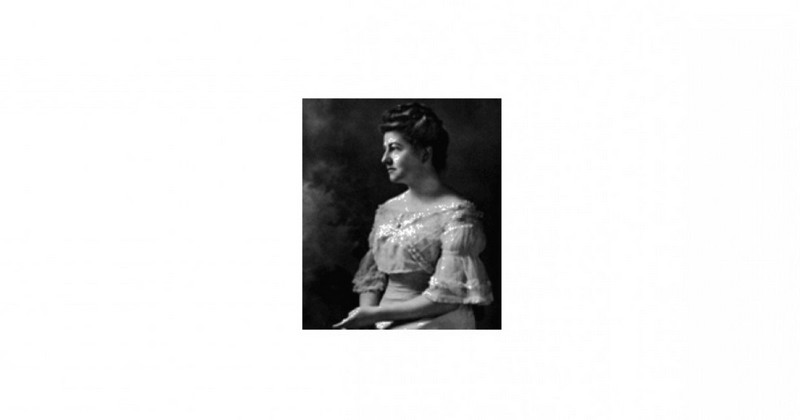Ethel Puffer Howes: biography of this psychologist and activist

Puffer Howes struggled to lead a profitable scientific career in a markedly sexist world.
Ethel Puffer Howes (1872-1950) was an American psychologist who conducted several studies on the psychology of beauty and aesthetics, which represented one of the important steps to consolidate psychology in the experimental field and beyond philosophy.
In this article we take a closer look at the biography of Ethel Puffer Howes.. A psychologist who, while developing in the experimental area, strongly questioned the difficulties of women in the nineteenth and twentieth century in reconciling a married life with an academic career.
Ethel Puffer Howes: biography of this pioneer in scientific psychology.
Ethel Dench Puffer (later Ethel Puffer Howes), was born on October 10, 1872 in Massachusetts, USA, in Massachusetts, United States, into a family that promoted higher education for women.. Her mother was a teacher and had received professional training at Smith College, which served as a guide for Ethel and her four younger sisters. As soon as she had graduated, Ethel Puffer began teaching mathematics at the same college, and at the same time, she developed a special interest in psychology. In this field Puffer was recognized by various scholars and even associations as a pioneering psychologist.
As did several of the psychologists of the time, and in view of the recognition that Wundt's experimental work was gaining, Puffer Howes moved to Berlin, Germany in 1895. With surprise she found that in Germany there was a greater exclusion of women in scientific psychology and laboratories.
In this context she met psychologist Hugo Münsterberg, who was interested in working with Ethel and her professional interests. Specifically, the psychologist was interested in researching beauty and aesthetics from a social perspective. This interest fitted in well with the process of consolidation of scientific psychology, since the subject of aesthetics had been concentrated solely in the field of philosophy..
For this very reason he obtained a scholarship from the Association of College Alumni to pursue a doctorate with Münsterberg, who was teaching at Harvard in the United States. She returned to Massachusetts and was educated at the attached college for women, Radcliffe College. As was the case with other women of the same era, Puffer completed her doctorate after completing the same tasks as her peers; she was nevertheless awarded a degree as equivalent work.
Years later, Ethel took several steps to apply to Harvard for official doctoral recognition.. In response, she and three other psychologists were offered a Ph.D. degree by Radcliffe, which Puffer accepted. Her experimental research into aesthetics resulted in the publication of the book The psychology of Beauty in 1908.
Between marriage and scientific career
Ethel Puffer subsequently taught at various women's colleges and in 1908 married Benjamin Howes, a civil engineer whom she met after graduating from Smith College. In this context, something as innocuous as acquiring her husband's surname caused Ethel various difficulties both in continuing her development in science and in meeting the expectations of marriage.
From her own experience, Ethel Puffer was one of the first scientists to bring into public debate the conflicts women faced in doing both science and a "successful" married life, i.e., meeting the social and normative expectations of marriage, that is, meeting the social and normative expectations of marriage..
As part of her marital commitment she had to move to a rural community because of her husband's jobAmong other things, this led her to reflect on the poor compatibility between the burden of domestic activities and the intellectual demands of scientific psychology. This incompatibility also represented a major stressor for women who found themselves gradually renouncing the ideals of professional training to which they had devoted years of their lives.
In short, Ethel Puffer questioned the demand to lead a "perfect personal life"; with the path of personal fulfillment, which generates different contradictions when the first corresponds to marriage and the second to a task already associated with masculine values: doing science. After spending several years of private reflection, Ethel brought this discussion to science itself, in the form of research and various academic articles where she describes the tensions that women scientists went through and possible strategies of conciliation, for example the development of day-care centers and special services for working mothers.
Among her main works are "Accepting the universe" and "Continuity for women", both from 1922. Among other things, she proposed to reform the professional conditions of women, without addressing the possibility of redefining marriage and the sexual division of labor.
Gendered identity vs. scientific identity
Women who opted for higher education in the late nineteenth and early twentieth century, lived a major tension between the public image of obedient and submissive wife, and the silence of an "I" with desires and initiatives that corresponded to a sphere associated with opposing values.. In the social imaginary, scientists were men, and women's activity was associated more with the private sphere.
Scientific activity, being associated with values opposed to those associated with women, also implied their exposure to social sanctions related to skepticism about their abilities and the validity of their activities. The latter was distressing for women who considered themselves "atypical" for practicing in science and not remaining within the confines of the domestic space.
Bibliographical references:
- Rodkey, E. (2010). Profile. Ethel Puffer Howes. Retrieved July 02, 2018. Available at http://www.feministvoices.com/ethel-puffer-howes/
- García Dauder, S. (2005). Psychology and Feminism. Forgotten history of pioneering women in Psychology. Madrid: Narcea.
(Updated at Apr 12 / 2024)